AudioTrak Prodigy 7.1 - The Drivers and Installation
Installation
The included user guide goes into some detail about the driver installation, which is significant. Because of the dual driver nature of the Prodigy, one Sensaura3D device, one Prodigy 7.1 device, there are several steps to go through during installation. Thankfully, these are automated by wizard.
![]()
After that, you'll need to restart your computer to get the systray icon to show up.
AudioTrak is very aggressive about keeping up its drivers, so you should download the latest driver from AudioTrak's website. It's a 1.5MB download, which ain't bad even for dial-up users.
The Drivers
The current latest version of the Prodigy driver is 1.97-3511, which is what we used for screenshots. I found this driver to be very stable, easy to use, and didn't hog resources. At 1.7MB, it uses less memory than the Microsoft mouse driver according to the WinXP TaskManager.
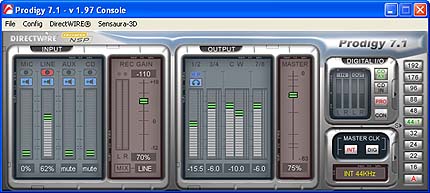
There are some little thubers around the edges that look they do something, but actually don't.
The layout of the driver is very well done and looks cool. The inputs are first, then the outputs. If you're a home studio dude/dudette, you'll like this. Getting sound into the computer is the hard part. Getting it back out isn't. The digital I/O controls are on the right side.
At first I couldn't use the sliders too well, until I discovered it will use the mouse wheel. The driver will grab pointer focus on a slider, and from there all you gotta do is zip the wheel. This allows for very precise .5dB steps in setting volumes, which is excellent.
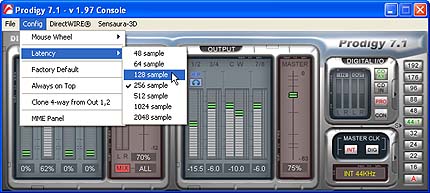
There are some nice touches in the menus.
There are several innovative features that are unique to the Prodigy: DirectWIRE, Advanced-NSP, and the E-WDM, which enables the other features.
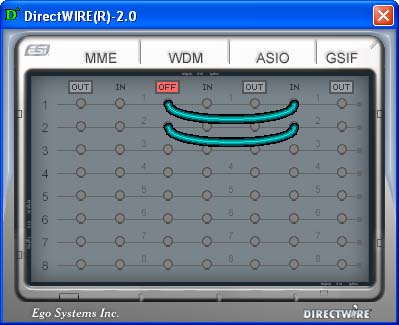
Each of the 8 channels are routable to other API's
You can route outputs from the basic windows WDM driver to the ASIO to patch in reverb effects while you're playing an MP3, for example. I think it's pretty slick once you get the hang of it. The one problem wasn't so intuitive to figure out was wiring inputs, so you could wire in NSP effects on the fly as you record. Just as I was about to complain to AudioTrak, I was informed that AudioTrak is preparing to release DirectWIRE 3.0, which will make routing to inputs just as easy as the outputs.
There went the only thing I could complain about.
Almost.
NSP
Another unique feature of the Prodigy is the Native Sound Processor, or NSP--a rebadged SpinAudio FX Processor ME.
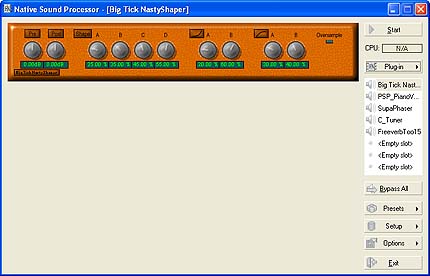
It's pretty nasty, but much fun. I'm talking about the plug-in.
The NSP is a neat way to add VST plugins to filter sound. Basically, it is a real-time multi-effects engine. It is very configurable; you can have anything between a single effect on 8 channels or you can have 8 simultaneous effects running on a single channel. Each VST plugin can be simple effects, like reverb, chorus, phaser, etc., or a very complicated synthesizer/wave shaper. There is the cost of eating up CPU cycles, but the NSP also has a guage to keep tabs on its usage.
There are heaps and heaps of VST plugins out there on the wild, wild web, many as a free download or shareware. The NSP, I found does not support all of them. While I was working on a song for my woman, I discovered none of the Cubase SX or Cubasis VST plugins seemed to work. It was even finicky about ones I had downloaded. Bummer.
Speaking of plug-ins, there is even a tuner plug-in, which is great because I haven't been in tune for years.
Despite the incompatibility problem, the NSP is still a musician's killer app. It has the capability to save a starving musician hundreds of dollars on software. You can do a lot with Kraft Mac'n Cheese, as any starving musician can tell you, but it gets old, real fast.
Gamers shouldn't worry so much about NSP eating up CPU cycles while they're getting their fix. AudioTrak split up the driver models, one for the Prodigy as a sound card, and the other as a Sensaura3D device for games. This is selectable from the Control Panel without a restart. The driver has a menu choice to open the sound controls and you select the Sensaura3D from there.
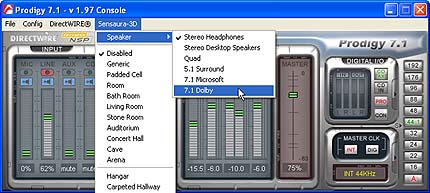
There are more reberb effects below the window.
You'll have to install the included WinDVD software to get the SRS features:
-
SRS TruSurroundXT
-
SRS Dialog Clarity
-
SRS TruBass
-
Dolby Digital Decoder
-
Dolby Digital EX
-
ICE ( splits 2-channel sound up to 7.1)

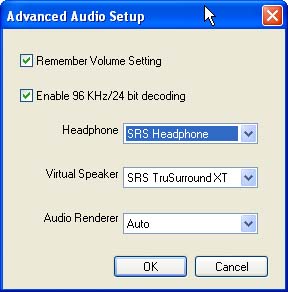
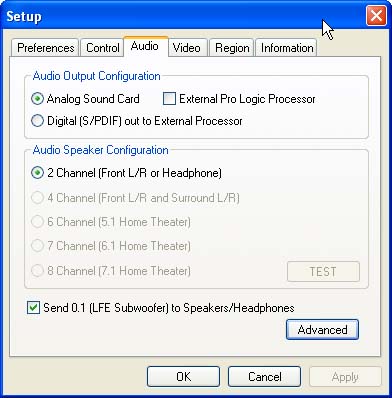
There's more SRS and Dolby features included in the WinDVD 4.0 than there is in M-Audio Revolution's drivers, namely with the inclusion of the SRS Headphone.
I like the dual driver model, it's a logical solution that keeps the gaming aspect seperated from the audio. It is simple to use and, more importantly, really works. The DirectWIRE in combination with the NSP is a cool tool for the audio recording nut in you. This marks the first time I actually recorded anything on the computer directly, and not to a DAT or Minidisc first. It was that easy. Oh, yeah, and the lady-friend liked the song, too. Thank you AudioTrak!
